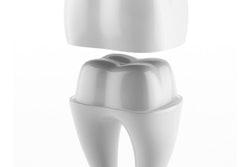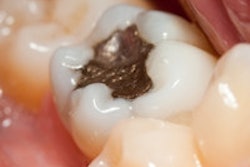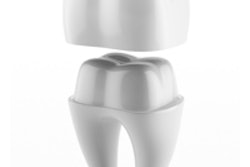
For dentists and patients alike, longevity is one of the most important aspects of a restoration.
Patients inevitably want to know how long their dental work will last, and now a new study examining predictors of early amalgam and resin-based composite (RBC) restoration failures could help practitioners with setting patient expectations and making treatment choices (Journal of the American Dental Association, June 2013, Vol. 144:6, pp. 583-593).
Researchers from the University of Alabama at Birmingham (UAB) School of Dentistry and other institutions tapped into the National Dental Practice-Based Research Network (NDPBRN) to evaluate the two types of restorations during a 24-month period to track how patient characteristics, practice characteristics, and clinical variables factored into early failure in the prospective cohort study.
The 226 recruited practitioners who participated in the study were from various research networks in the U.S. and abroad. They placed and tracked 6,218 direct restorations in 3,855 patients. When placing the restorations, the dentists recorded notes on three categories: patient characteristics, practice characteristics, and clinical observations.
For patients, the characteristics recorded included sex, race, and age range. For practices, data recorded included practitioner characteristics such as sex and years since graduation, practice size and type, and workload in 32 hours spent per week on patient care. And on the clinical side, the practitioners noted the number of restorations placed during the visit with a maximum of four (and an average of 1.73), the surfaces affected and depth of the lesion, whether the lesion was carious or noncarious, and amalgam or RBC.
In addition, the restorations were classified from class I to V, along with size and position in the mouth at baseline. During the return visit, the patients' restorations were categorized as "acceptable" or "repair and replace."
Complex relationships
Of the 6,218 restorations placed, the participating dentists reported that 386 of them failed for a rate of 6.2%. The mean follow-up reported for failed restorations was 9.2 months.
Ultimately, the researchers did not find a significant association between the type of restorative material used and longevity. Nor did tooth type have a significant association. However, the results turned up an array of other factors that had an impact on the likelihood of failure, which is perhaps why the material type alone is an inadequate longevity predictor, according to published evidence considered by the researchers.
"We are just beginning to understand the complexity of restoration success. It is more complex than choosing the restorative material only," Valeria Gordan, DDS, MS, MS-CI, a professor and director for the NDPBRN at the University of Florida College of Dentistry, stated in an email to DrBicuspid that was reviewed by lead researcher Michael McCracken, DDS, PhD, a UAB School of Dentistry professor. "The dentist, the tooth, the materials, the patient, even the schedule for the day -- all of these factors can directly impact the success of a restoration."
Size and depth of the restoration were highly significant factors. Only 4% of class I restorations failed, while 17% of large restorations spanning four or more surfaces failed. Deeper restorations were even more at risk, with the odds of failure 60% greater than for shallower restorations.
"On higher failure rates for larger restorations, we do believe this should influence treatment plans," Dr. Gordan noted. "Once you get to four surfaces involved, you see a large jump in failure rates. We believe that this could be a factor that would push dentists more toward an indirect restoration, such as an inlay or a crown. Presumably, other factors would also be present to lead a decision toward a crown, such as a lack of remaining tooth structure."
The number of surfaces a restoration covered was a "highly significant predictor," and failure increased as the number of surfaces involved increased. "When the number of surfaces restored at baseline increased from one to three, the failure rate increased from 5% to 9%," the researchers noted.
Other factors
Depth also was significant; for lesions that extended into the deepest one-third of the dentin, 9% of the restorations failed. Interestingly, 6% of restorations placed to address caries failed, while 8% placed for noncarious defects failed.
Patients' race and sex were insignificant predictors, but younger patients were less likely to have a restoration fail. In pediatric patients, 4% of restorations failed, while 10% failed in those who were 65 or older.
"Overall, the patient age seems to be a secondary factor after restoration size in the treatment planning process," Dr. Gordan explained. For example, she said, if a tooth has a four-surface restoration and it is for a senior patient, the dentist's decision may lean more toward an indirect restoration.
Variables for practice type and time since graduation for the practitioner were insignificant. However, there was a difference between general dentists and specialists in the univariate analysis: Pediatric dentists had a failure rate of 1% compared with 6% for general dentists.
"In the multivariate model, the impact of specialty status on failure rates was not significant," Dr. Gordan explained. "It is likely that improved success rates for pediatric dentists (in the univariate model) were related to patient age and the fact that the restoration may have had a lower number of surfaces."
The researchers also found a difference in failure rates between part- and full-time practitioners: 8% and 6%, respectively. In addition, they noted a disparity in the success of restorations placed by men and women. In the multivariate regression, "restorations placed at baseline by male clinicians were less likely to fail than were those placed by female clinicians," the researchers wrote. The data could be linked to the fact that in this study and others, women made up more of the part-time practitioners than men. The researchers also suggested the possibility that "women may be more likely than are men to report a restoration as a failure" or choose a more conservative approach for certain lesions.
Workload was relevant as well. Practitioners who reported being not busy and those who were too busy had the best clinical results, with failure rates about one-half those of practitioners who had more balanced workloads.
"This was an interesting finding, but hard to interpret," Dr. Gordan noted. "The effect was small, so this is not a major factor. Still, it should begin to stir thoughts in the dentist's mind that factors outside of the control of the patient also affect restoration longevity. The 'stress level' or 'business level' of the dentist may impact the success of the restoration."



















